Introduction
Are rabbits nocturnal? Let’s find out.
With its fluffy tail and twitching nose, the rabbit has become the star of my wildlife exploration. But what truly fascinates me is their nocturnal behavior.
Imagine venturing into the depths of night to witness their hidden world come to life. It’s like finding a secret portal to an alternate reality where rabbits dance under the moonlight and embrace their wild instincts.
In this extraordinary rabbit adventure, we’ll delve deep into their mysterious nocturnal habits. We’ll unearth the secrets of their twilight forays, uncover their hidden hiding spots, and witness their social interactions under the soft glow of the stars.
But that’s not all – we’ll also explore the science behind their nocturnal prowess, diving into the fascinating details of their enhanced vision, acute hearing, and remarkable sense of smell. Together, we’ll unravel the intricate mechanisms that make rabbits not just survivors, but thriving masters of their moonlit domain.
So, strap on your bunny boots and prepare to hop into a world of nocturnal wonder. Join me on this thrilling escapade as we uncover the secrets of the night and witness the enchanting beauty of rabbits in their nocturnal glory.
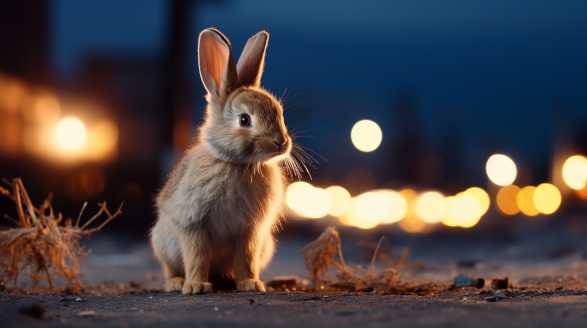
Key Takeaways
- Rabbits are crepuscular, meaning they are most active during dawn and dusk.
- Domesticated rabbits exhibit nocturnal behaviors, including increased activity, foraging, play, and grooming during the night.
- Twilight is an important time for rabbits to socialize, explore, and engage in their natural instincts.
- Factors such as the living environment, human interactions, and individual temperament can influence a rabbit’s nocturnal behaviors.
- Providing hiding spots, enrichment activities, and outdoor exploration opportunities can help support a rabbit’s natural instincts and overall well-being.
How Rabbits Use Their Senses to Navigate in the Dark
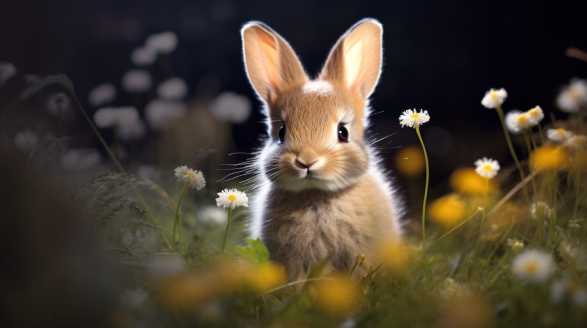
As a wildlife enthusiast and avid observer of nature, I often find myself intrigued by the incredible abilities and adaptations of animals. One of the creatures that never fails to captivate me is the humble rabbit.
But how do rabbits navigate in the dark? Let’s dive deep into their sensory world and uncover the fascinating ways in which they overcome this challenge.
Enhanced Vision: A Rabbit’s Secret Power
Rabbits possess exceptional vision, especially when it comes to perceiving movement in low-light conditions. Their eyes are perfectly designed to pick up even the slightest motion, making them incredibly efficient at detecting predators or potential threats lurking in the darkness.
- Wide Field of Vision: Rabbits have nearly 360-degree panoramic vision, which means they can spot danger from almost any angle. This wide field of vision allows them to monitor their surroundings without needing to turn their heads constantly.
- Night Vision Adaptations: While rabbits cannot see in complete darkness like nocturnal animals such as owls, their eyes are equipped with certain adaptations that enhance their night vision. The photoreceptor cells in their retinas are highly sensitive to low light, enabling them to navigate dimly lit environments with relative ease.
- Tapping into Dusk and Dawn: Rabbits are crepuscular creatures, meaning they are most active during twilight periods – dawn and dusk. These times of the day offer just enough light for their enhanced vision to function optimally. By exploiting these windows, rabbits can explore their surroundings while minimizing the risks associated with complete darkness.
Keen Sense of Hearing: Ears like Radars
If you’ve ever looked closely at a rabbit, you’ve probably noticed their impressive ears. Not only do they add to their adorable appearance, but they also play a pivotal role in helping rabbits navigate in the dark.
- Sound Localization: Rabbits have the uncanny ability to accurately locate the source of a sound. Their ears can rotate independently, allowing them to pinpoint the direction from which a noise is coming. This acoustic precision helps them determine if potential predators or prey are nearby.
- Ultra-sensitive Hearing: The auditory acuity of rabbits is astonishing. Their large ears are covered with fine hairs that can detect even the softest sounds, making it almost impossible for anything to sneak up on them unnoticed. This heightened sense of hearing keeps them one step ahead of potential danger under the veil of darkness.
A Nose for Survival: Smell Like No Other
While vision and hearing are vitally important for a rabbit’s navigation, their sense of smell is equally remarkable. Here’s why their noses are the key to their survival:
- Enhanced Olfactory Receptors: Rabbits possess an extraordinary sense of smell, aided by an estimated 100 million olfactory receptors. This keen sense enables them to detect the presence of predators, locate potential food sources, and navigate their environment in complete darkness effectively. They can even identify familiar scents and distinguish between those that are safe and those that pose a threat.
- Scent Marking: Rabbits have scent glands located in different parts of their bodies, including their chins and bellies. They utilize these glands to leave scent marks as a way of marking their territory or communicating with other rabbits. In the dark, the ability to recognize these scent trails becomes even more critical, providing them with a navigational map.
Tactile Qualities: Whiskers as Navigator
In addition to their incredible vision, hearing, and sense of smell, rabbits boast another remarkable sensory adaptation – their whiskers. These stiff hairs, scientifically known as vibrissae, provide vital tactile information that aids in their navigation:
- Obstacle Detection: The whiskers on a rabbit’s face are exceptionally sensitive. By constantly brushing against objects and surfaces, they provide the rabbit with valuable information about its immediate environment. This allows rabbits to feel their way around, identifying potential obstacles and avoiding collisions, especially in low light conditions.
- Body Awareness: Whiskers not only extend from the rabbit’s face but also appear on its forelegs. These foreleg whiskers help the rabbit sense its own body position relative to its surroundings. This heightened body awareness allows for precise movements, making navigation in the dark much safer and more efficient.
As I reflect on the incredible array of sensory adaptations possessed by rabbits, it’s clear that these small mammals are marvels of nature. Their heightened vision, acute hearing, extraordinary sense of smell, and navigational whiskers equip them with an array of tools to thrive in the darkness.
So, next time you spot a rabbit gracefully navigating through the night, take a moment to appreciate the wonders of its sensory repertoire.
A Closer Look at Rabbit Vision: Can They See in the Dark?
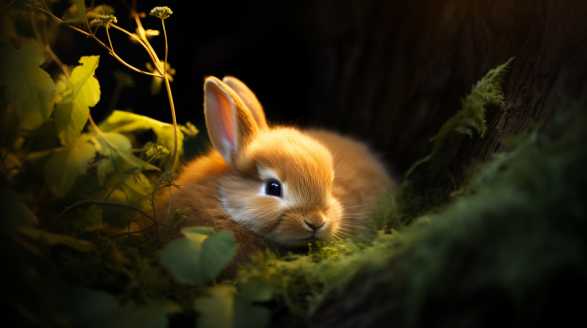
As an avid animal lover and curious individual, I have always been fascinated by the wonders of nature. Recently, I found myself pondering a peculiar question: can rabbits see in the dark?
Join me as we look into the world of these fluffy creatures and explore their visual abilities.
The Eyes of a Rabbit: Unveiling the Secrets
Rabbits possess a set of eyes that may seem ordinary at first glance, but hold remarkable features beneath the surface. Here’s a closer look at the intriguing aspects of a rabbit’s vision:
- Placement and positioning: Rabbits’ eyes are located on the sides of their head, providing them with a wide field of vision. This arrangement allows them to detect predators more easily, as they can monitor a larger area without needing to turn their heads.
- Monocular vision: Unlike humans and some other animals, rabbits primarily rely on monocular vision, meaning each eye sees the world independently. This enables them to gauge distance more accurately, particularly when engaging in quick movements or locating potential sources of food.
- Field of view: While our field of view encompasses around 180 degrees, rabbits enjoy a panoramic sight, stretching their field of vision to an astounding 360 degrees. Just imagine having eyes that can see behind you without turning your head!
Shedding Light on a Rabbit’s Night Vision
Discovering the Facts
Curiosity led me to wonder whether rabbits possess the ability to see in complete darkness, much like nocturnal animals such as owls or cats. Here’s what I uncovered:
- Crepuscular creatures: Although rabbits are not considered nocturnal, they exhibit crepuscular behavior. This means they are most active during the twilight hours of dawn and dusk, when their visual adaptations serve them well.
- Limited night vision: While rabbits do have some ability to navigate in dimly lit environments, their night vision is not as potent as that of nocturnal animals. Their vision may become slightly blurry in darkness, making it challenging for them to discern objects or obstacles.
- Adapted pupils: One fascinating aspect of rabbit vision is their pupils’ adaptability to lighting conditions. In bright light, their pupils constrict to a vertical slit, effectively narrowing the amount of light that enters their eyes. Conversely, in low-light conditions, their pupils dilate, attempting to capture as much available light as possible.
Illuminating Details: Further Insights into Rabbit Vision
Seeking Clarity
Continuing my exploration into rabbit vision, I stumbled upon some intriguing tidbits that shed even more light on the matter:
- Color perception: While rabbits can perceive colors, they have a limited range compared to humans. Their vision is most sensitive to shades of green and blue, making them particularly skilled at detecting vegetation in their surroundings. Seeing the world through a rabbit’s eyes must be quite the kaleidoscope!
- Motion detection: Rabbits have an extraordinary ability to detect even subtle movements in their environment. This heightened motion detection serves as a vital defense mechanism in the wild, allowing them to spot potential threats from afar.
- Vertical orientation: Due to the positioning of their eyes at the sides of their head, rabbits have a particular fascination with vertical objects. This is why they may appear to “binky” or hop around excitedly when confronted with tall structures or human legs. It’s their unique way of exploring their surroundings!
Can Bunnies Truly See Clearly?
A Critical Examination
Now that we’ve uncovered some of the mysteries surrounding rabbit vision, let’s address a common concern: do rabbits suffer from nearsightedness or farsightedness?
- Near and far:
- Nearsightedness: Rabbits are capable of seeing objects up close with relative clarity. Their keen attention to detail becomes apparent when they nibble on small pieces of food or inspect something in their immediate vicinity.
- Farsightedness: On the other hand, rabbits may struggle with focusing on objects that are far away. Their vision tends to be stronger in close quarters, allowing them to spot potential dangers or food sources nearby.
- Blind spots: Rabbits’ unique eye placement comes with a tradeoff. While their panoramic vision is impressive, they do have blind spots right in front of their noses. This makes it crucial for owners to approach their bunnies slowly and avoid sudden movements that could startle them.
Rabbit Vision: The Final Verdict
Concluding Insights
After my thorough investigation into the world of rabbit vision, I have come to a fascinating conclusion:
Rabbits are indeed remarkable creatures, possessing visual adaptations that suit their crepuscular nature. While they may not possess the same level of night vision as owls or cats, their ability to adapt to different lighting conditions and their extraordinary panoramic vision make them truly unique.
So, the next time you catch your bunny gazing off into the distance or hopping around with excitement, remember that they view the world through a slightly different lens. Embrace their fascinating visual abilities as yet another marvel of nature’s creativity!
Exploring the Nighttime Habits of Wild Rabbits
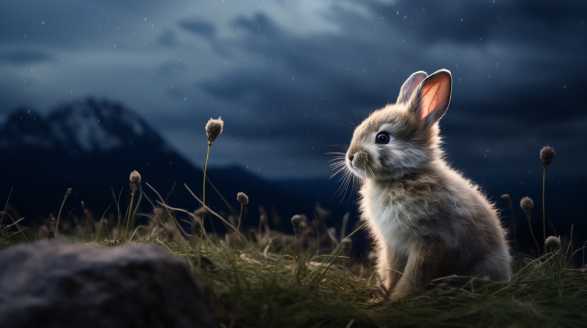
The Nighttime Playground
When the moon rises and most nocturnal animals awaken, wild rabbits are no exception. These adorable creatures use the cover of darkness to explore their surroundings with a sense of freedom.
1. Scavenging for Food
Wild rabbits primarily feed during the early morning and at dusk, but don’t be fooled into thinking they’re asleep all night. When night falls, their never-ending quest for nourishment continues.
2. Socializing and Bonding
Rabbits are naturally social animals, and the nighttime offers them a chance to spend quality time with their companions. During these hours, they engage in playful bouts of hopping, chasing, and cuddling.
The Elusive Ways of Wild Rabbits
While it may be tempting to think that rabbits would be easy to spot due to their size, their ability to camouflage themselves in the darkness is remarkable. Their impeccable survival instincts make them masters of evasion and create an air of mystery around their nighttime routines.
1. Silent Hopping
One would assume that rabbits must make noise as they hop around, but it’s quite the opposite. Their nimble feet land softly on the ground, ensuring they go unnoticed by predators and fellow animals.
2. Dodging and Weaving
Rabbits have an astonishing ability to swiftly change direction while running, making it difficult for any pursuers to catch them. This acrobatic skill, coupled with their natural preference for running in zigzag patterns, creates a mesmerizing spectacle under the moonlight.
The Dance of Love
The nighttime isn’t just a time for survival and exploring—it’s when rabbits engage in their enchanting mating rituals. These graceful and rhythmic displays are not to be missed.
1. Moonlit Romance
Under the silver glow of the moon, male rabbits compete for the attention of a female companion. They showcase their athleticism with impressive leaps, twists, and quick turns, all while ensuring they stay on her good side.
2. Nurturing the Burrow
Once a pair has successfully mated, it’s time for the female to create a safe and comfortable space for her upcoming litter. Rabbits are known for their elaborate burrows, and the nighttime is when these tunnels take shape.
Protecting the Nighttime World
While wild rabbits are small and seemingly vulnerable, they have an arsenal of tricks up their furry sleeves to avoid danger and safeguard their loved ones.
1. Alert Ears
A rabbit’s ears are not simply adorable; they serve as highly efficient surveillance equipment. With their sensitive hearing, rabbits can detect the faintest of sounds, allowing them to stay vigilant and react quickly to approaching predators.
2. Freeze and Flee
When faced with immediate danger, rabbits employ a fascinating strategy called “freeze and flee.” They remain motionless, even crouching down to blend in with their surroundings.
Exploring the nighttime habits of wild rabbits has been a adventure. From their scavenging for food to their captivating courtship dances, these creatures have so much more to offer under the cloak of darkness.
Distinguishing Between Diurnal and Nocturnal Rabbit Species
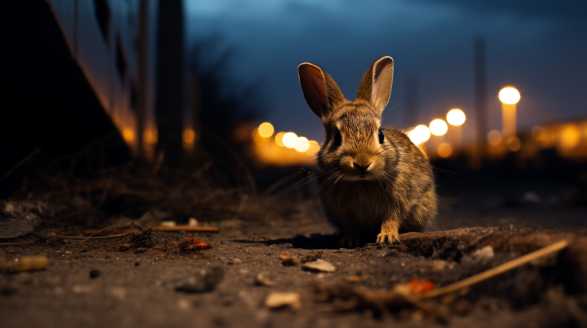
What Makes Rabbits So Fascinating?
Before we dive into the characteristics of diurnal and nocturnal rabbits, let’s take a moment to appreciate these marvelous creatures. Rabbits, known for their adorable appearance and nimble nature, belong to the Leporidae family, which includes over 60 species worldwide.
Understanding Diurnal Rabbits – The Daytime Dwellers
Diurnal rabbits are those delightful creatures that are most active during the day. Here are some unique features that distinguish them from their nocturnal counterparts:
1. Physical Appearance
Diurnal rabbits typically have light-colored fur, which provides them with excellent camouflage against the bright daylight. Their fur often reflects light, allowing them to blend seamlessly into their surroundings.
2. Daily Habits
Being active during the day, diurnal rabbits are expert foragers. They indulge in nibbling on fresh, green vegetation and are frequent visitors to luscious meadows and fields abundant with nutritious food sources.
3. Social Behavior
Diurnal rabbits are known to be quite sociable creatures. They thrive in colonies, living in large groups where they can establish social hierarchies and provide support to one another.
Unveiling the Secrets of Nocturnal Rabbits – The Nighttime Wanderers
With the moon as their guiding light, nocturnal rabbits effortlessly explore the nocturnal world. Let’s uncover the mysteries surrounding these captivating creatures:
1. Adaptations for Nightlife
Nocturnal rabbits possess various adaptations that make them well-suited for their nighttime lifestyle. Unlike their diurnal counterparts, they have a darker fur coloration, which enables them to blend into the shadows effectively.
This adaptation allows them to navigate stealthily under the stars.
2. Feathered Friends
Nocturnal rabbits are often accompanied by a range of feathered friends, such as owls and nightjars. These winged companions have exceptional night vision, and their heightened senses provide an added layer of protection for the rabbits.
3. Thriving Under Cover
In the magical darkness of nighttime, nocturnal rabbits thrive in dense vegetation and wooded areas. Such environments provide ample cover, allowing them to remain hidden from potential predators while they explore the shadows in search of food.
The Best of Both Worlds – Crepuscular Rabbits
Hold your carrots, folks! We can’t forget about the crepuscular rabbits – the marvelous creatures that embrace the beauty of both day and night.
1. Twilight Specialists
Crepuscular rabbits are exceptionally equipped for dim-light conditions. Their fur coloration, often a blend of light and dark shades, caters to their transitional lifestyle when dawn breaks or dusk settles.
2. Dining Adventures
Crepuscular rabbits embrace a diversified diet, taking advantage of the abundance of vegetation found during twilight. They nibble on tender grass shoots and enjoy the benefits of plants that produce more nutrients during these magical hours.
The Beauty Lies in Their Differences
As we wrap up our journey through the world of diurnal, nocturnal, and crepuscular rabbits, it’s essential to remember that each species possesses unique features that make them worthy of admiration. From their physical appearances and daily habits to their social behavior and adaptive mechanisms, these remarkable creatures have perfected the art of survival in diverse environments.
So, the next time you spot a rabbit hopping about, take a moment to appreciate its individuality and the wonders that nature has to offer. After all, it’s the differences that make our world so beautifully diverse!
Keep exploring with curiosity!
The Influence of Moonlight on Rabbit Activities
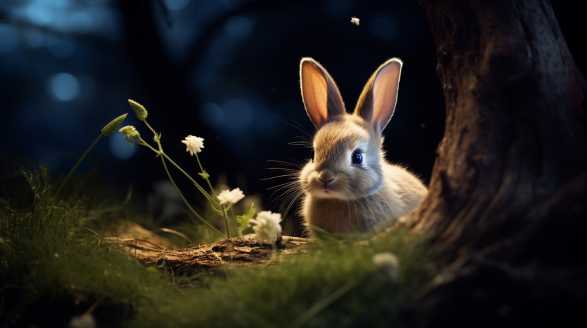
Have you ever wondered how the soft glow of the moon affects the behavior of furry creatures in the night? As an avid nature enthusiast, I have always been intrigued by the effects of moonlight on various animals, especially rabbits.
Today, I will look into the mystical world of rabbits and explore how moonlight influences their nocturnal activities.
Moonlit Nights: A Time for Rabbit Adventures
Under the enchanting moonlight, rabbits embark on a captivating journey through meadows and fields, each hop a tiny step closer to their destination. Moonlit nights offer a myriad of opportunities for rabbits to engage in various activities that might surprise you.
- Feeding Frenzy: Rabbits are nocturnal herbivores, and moonlight ensures bountiful access to lush, green vegetation. Moonlit nights become feasting grounds for rabbits as they nibble on grass, herbs, and other plants, relishing every morsel illuminated by the moon’s gentle glow.
- Social Interactions: Moonlit nights serve as a rendezvous for rabbits, allowing them to engage in social interactions. During this time, they communicate through body language, scent marking, and playful hopping, forming and reinforcing social bonds within their community.
- Courtship Rituals: The moonlight casts a romantic ambiance in the rabbit world. Male rabbits use this time to showcase their prowess by engaging in energetic displays of jumps and spins. Meanwhile, females evaluate potential mates, observing their agility and strength under the soft moonlit glow.
- Territory Marking: Moonlight provides rabbits with optimal visibility, allowing them to mark their territory effectively. Through scent markings and digging, rabbits establish their domain, safeguarding food sources and protecting themselves from potential threats.
- Exploration and Foraging: The night sky illuminated with moonlight entices rabbits to explore their surroundings. Their acute senses guide them through burrows, across open spaces, and under moonlit canopies as they scour for food and discover new hiding spots.
The Science Behind the Moonlight’s Influence
While it’s easy to be captivated by the connection between rabbits and moonlight, it’s essential to understand the scientific factors that contribute to this unique influence. Here are a few intriguing facts:
- Increased Visibility: Moonlight provides rabbits with enhanced visibility during their evening excursions. Their specialized eyes, equipped with a reflective layer known as the tapetum lucidum, capture and amplify available light, allowing rabbits to navigate their environment with ease. This improved visibility grants them the advantage of avoiding predators and locating food.
- Circadian Rhythms: Rabbits possess an internal clock, known as a circadian rhythm, which helps regulate their activity patterns. The moonlight acts as a natural cue, synchronizing their activities with the night-time environment. This coordination ensures rabbits are active during times when predators are less likely to pose a threat, increasing their chances of survival.
- Moon Phase Impact: The intensity of the moon’s light varies depending on its phase. For instance, during a full moon, the sky is bathed in a radiant glow, altering the behavior of rabbits. Research suggests that during these nights, rabbits may become more cautious, displaying alertness and increased vigilance.
Rabbit Adaptations to Moonlight
As creatures of the night, rabbits have adapted in remarkable ways to thrive in the presence of moonlight. Let’s explore some of their fascinating adaptations:
- Sensitive Ears: Rabbits possess highly sensitive ears that aid them in detecting slightest sounds. This adaptation allows them to remain vigilant, promptly responding to potential dangers or disturbances in their surroundings.
- Silent Hopping: Rabbits are renowned for their ability to move noiselessly. By utilizing powerful leg muscles and a unique gait, rabbits can silently traverse moonlit fields, ensuring their presence remains discreet and concealed from predators.
Moonlight Myths and Legends
Over the centuries, humans have crafted numerous myths and legends surrounding the influence of moonlight on rabbits. These tales, passed down through generations, highlight the mysterious and enchanting nature of the relationship between rabbits and the moon.
- Transformational Energy: Some myths suggest that rabbits undergo transformations under moonlight, acquiring magical abilities and heightened senses, further emphasizing their connection to the mystical lunar energy.
- Lunar Eclipse Superstitions: Throughout history, lunar eclipses have been associated with supernatural occurrences. In certain cultures, people believed that rabbits could attain temporary immortality or the power of speech during these celestial events, further fueling the captivating myths surrounding moonlit rabbits.
Conservation and Rabbit Population
Understanding the influence of moonlight on rabbit activities is not only captivating but also crucial for conservation efforts. By comprehending their behavioral patterns and habitat requirements during moonlit nights, we can create conservation strategies that ensure the preservation of this delicate balance between rabbits and the moon.
Moonlit nights hold a mystical allure for both rabbits and enthusiasts like myself. The influence of moonlight on rabbit activities is a testament to the intricate connections between animals and their environment.
Just as the moonlight shapes the behavior of rabbits, this cosmic connection reminds us that nature’s mysteries are still waiting to be unraveled under the moonlit sky.
The Role of Hiding Spots in Rabbit Nocturnal Behavior
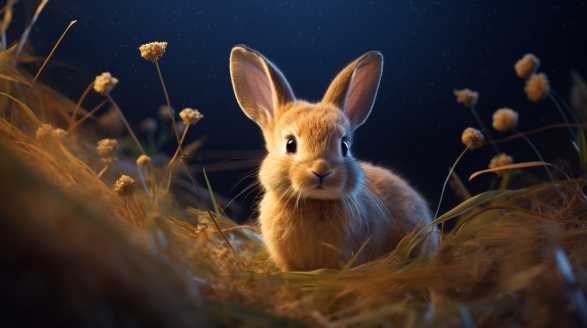
As an avid rabbit enthusiast, I’ve always been fascinated by the intricacies of these adorable furry creatures. One aspect that has particularly caught my attention is the importance of hiding spots in their nocturnal behavior.
Understanding Rabbit Nocturnal Behavior
Rabbits are notorious for their crepuscular nature, meaning they are most active during dawn and dusk. However, they are also known to exhibit some nocturnal behavior, especially in certain circumstances.
1. The Need for Security
Rabbits are prey animals, constantly on guard against potential predators. Their instinctual response is to find safety and security in challenging situations.
Hiding spots provide them with a safe haven where they can retreat and feel shielded from harm.
2. Comfort and Nesting
Hiding spots not only provide security but also offer comfort to rabbits. These furry bundles of joy love to cozy up in small, confined spaces.
The snugness of a hiding spot helps them feel secure, relaxed, and in control of their surroundings.
Types of Hiding Spots for Rabbits
Now that we understand why hiding spots are important to rabbits during their nocturnal escapades, let’s explore the various options available for creating the perfect hiding spot for our furry friends.
1. Cardboard Castles
Rabbits have a natural affinity for cardboard, making it an excellent material to create hiding spots. Utilize old boxes or purchase specialized rabbit castles made of cardboard.
2. Cozy Caves
Cozy caves are a fantastic option for ensuring your rabbit feels snug and secure. These enclosed structures can be made from soft fabrics, such as fleece or felt, or even repurposing cushions or blankets.
3. Tunnel Time
Rabbits are natural sprinters and love to explore. Tunnels are a great way to cater to their curiosity while offering a hiding spot.
Be sure to secure the ends properly to avoid any unexpected collapses during your rabbit’s adventure.
4. Fortifying with Furniture
Leverage your existing furniture to provide hiding spots for your rabbit. Underneath sofas, chairs, or beds can be transformed into cozy havens for your furry friend.
The Psychological Impact of Hiding Spots
Hiding spots not only fulfill rabbits’ instinctual needs but also have a profound impact on their psychological well-being. Let’s look into how these hiding spots provide your rabbits with mental stimulation and emotional support.
1. A Sense of Control
For a prey animal like a rabbit, control over their environment is crucial. Hiding spots empower them to feel in control and provide a sanctuary where they can choose to come out when they feel safe and ready.
2. Stress Reduction
Exposing rabbits to constant stimuli can lead to stress and anxiety. Hiding spots offer solace from overstimulation, allowing your furry friend to retreat and find comfort.
3. Expression of Natural Behaviors
Hiding and exploring small, confined spaces are natural behaviors for rabbits. By providing them with suitable hiding spots, we allow them to engage in these instinctual acts, fulfilling their needs for comfort and security.
Hiding spots are not just an accessory for rabbits; they are an essential component of their nocturnal behavior. By offering these furry bundles of joy a secure, comfortable, and stimulating environment, we can enhance their well-being and tap into their natural instincts.
The Sleep Patterns of Rabbits: Do They Stay Awake All Night?
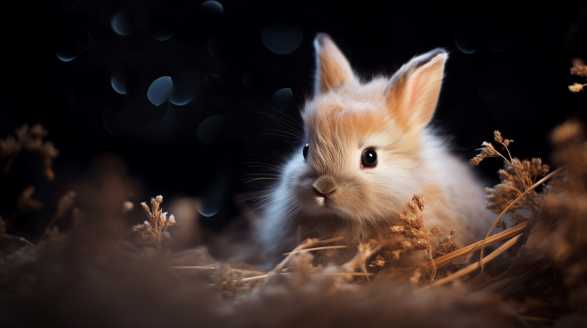
When it comes to rabbits, these adorable creatures have always captivated our hearts. With their fluffy fur and bouncy hops, it’s hard not to be charmed by their presence.
Do rabbits stay awake all night, just like nocturnal animals? Let’s dive into this fascinating topic and explore the sleep habits of our furry friends.
Introducing the Cottontail Cuties
Before we look into the realm of sleep, let’s take a moment to appreciate the beauty of rabbits. Rabbits belong to the Lagomorpha family and are renowned for their long ears and short fluffy tails.
Whether it’s the energetic Holland Lop or the regal Lionhead, rabbits have a captivating charm that simply cannot be ignored.
A Wakeful World?
Now, onto the main query at hand. Do rabbits stay awake all night?
However, this doesn’t necessarily equate to being active all night long.
Rabbit Routines: A Peek into their Sleep Schedule
Let me let you in on a little secret: a rabbit’s sleep schedule is quite different from ours. Instead of experiencing long, uninterrupted periods of sleep, they have a burst-style pattern – an enigma in itself!
- Light Sleep: Rabbits are light sleepers. Even the slightest noise or unfamiliar movement can jolt them awake. Their survival instincts keep them vigilant and alert, ready to flee from potential threats. This light sleep continues throughout the day and night, making them light snoozers.
- Frequent Naps: While rabbits don’t experience prolonged slumber like humans, they compensate with frequent naps. These power naps typically last a few minutes at a time, allowing them to recharge and maintain their energy levels throughout the day.
- Dawn and Dusk Delights: As crepuscular animals, rabbits are most active during the transitional periods between day and night. That’s when their energy peaks, and they engage in hopping, exploring, and munching on their favorite treats.
A Rabbit’s Sleep Sanctuary
Now that we understand a bit about their sleep patterns, let’s explore the cozy retreats rabbits choose for their slumber. While many domesticated rabbits spend their nights indoors, wild rabbits have their own sleep sanctuaries in the great outdoors.
- Burrows and Warrens: Wild rabbits are renowned for their elaborate burrows and warrens. These intricate underground systems serve as their homes, providing natural insulation and protection from predators. Within these intricate tunnels, rabbits create cozy nesting areas for sleep and relaxation.
- Hidden Nooks and Crannies: Both wild and domestic rabbits have an affinity for hiding spots and cozy nooks. They may curl up in corners, beneath furniture, or within specially designed hiding spots in their enclosures. These areas provide a sense of security, allowing them to snooze in peace.
- Soft and Cozy Bedding: Rabbits enjoy the comfort of soft bedding materials. Whether it’s natural options like hay or straw or specially designed cozy mats and blankets, a comfortable sleep surface is essential for their restful slumber.
Signs of Rabbit Sleep
Now that we know about their sleep routines and favorite hideaways, how can we determine if a rabbit is catching some Z’s? Keep an eye out for these indicators of rabbit sleep:
- Lying Down: A rabbit’s sleeping position is quite different from their alert stance. When a rabbit is sound asleep, they often lie down on their side, with their paws tucked neatly beneath them. This relaxed posture signifies that they are in a state of deep sleep.
- Immobile State: A snoozing bunny tends to become immobile. You might notice lesser twitching or movement during their sleep, as their muscles are fully relaxed. Take care not to disturb them during this vital rest time.
- Dreamy Twitches: Ever seen a rabbit twitching while asleep? Fear not, as this is quite normal. These little twitches indicate dream activity, transporting our fluffy friends to a world unknown to us mere humans.
The Importance of Rabbit Rest
Now that we have a better understanding of rabbit sleep patterns, it’s essential to highlight the importance of rest for the well-being of these adorable creatures. Adequate sleep helps maintain their physical health, promotes mental stimulation, and ensures overall happiness.
Wakeful Wonders: The Enigmatic Sleepers
So, do rabbits stay awake all night? Not exactly.
Their frequent naps, calming sleep sanctuaries, and unique sleeping positions make rabbits fascinating creatures to observe.
Now, armed with this knowledge, you can watch your furry companion slumber and appreciate their captivating sleep patterns. So, enjoy the wakeful wonders of rabbits, and cherish every moment with these lovable cottontail cuties!
The Circadian Rhythm of Rabbits: How Does It Affect Their Behavior?
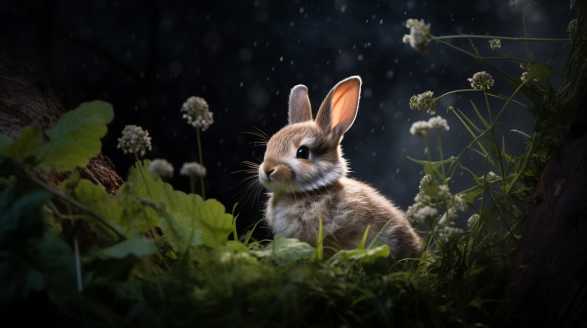
When it comes to rabbits, many people are familiar with their cute and fluffy appearances. However, have you ever wondered about their behavior?
So buckle up and hop along as we explore the secrets of these intriguing creatures!
What is the Circadian Rhythm?
Before we look into the specifics of rabbits, let’s first understand the concept of the circadian rhythm. Essentially, the circadian rhythm refers to a biological process that regulates an organism’s sleep-wake cycle, hormone production, and other physiological functions.
Humans, as diurnal creatures, have a circadian rhythm that aligns with daylight hours. However, rabbits, being crepuscular creatures, have a unique pattern of behavior influenced by their internal clock.
Crepuscular: Why Do Rabbits Prefer Twilight?
Rabbits are known for being crepuscular animals, which means they are most active during the twilight hours of dawn and dusk. This behavior allows them to take advantage of the relative safety during these times, as it provides them with both light and darkness.
This unique adaptation makes them masters of their environment, maximizing their chances of survival.
The Activity Patterns of Rabbits
So, what exactly do rabbits do during their active hours? Let’s take a closer look at some of their typical behaviors:
- Feeding Frenzy: Rabbits are herbivores and have a constant need to graze. During their active hours, they focus on foraging for food, which primarily consists of grass, plants, and even bark. Their circadian rhythm ensures that they have sufficient time to find and consume their necessary nutrients.
- Social Connections: Rabbits are social animals that form strong bonds with their fellow bunnies. Their active hours provide them with the opportunity to engage in social interactions, such as grooming each other or playing chase. It’s during these moments that their playful and mischievous natures shine through.
- Reproductive Activities: Like many animals, rabbits have a strong instinct for reproduction. Their active hours also coincide with their peak mating season, allowing them to seek potential mates and engage in courtship behaviors. During this time, male rabbits may display territorial behaviors to attract the attention of females.
- Exploration and Burrowing: Rabbits are curious creatures and love to explore their surroundings. During their active hours, they may hop around, investigating new areas and searching for safe burrows to call home. This behavior not only provides shelter but also acts as an essential part of their overall natural behavior.
The Importance of the Circadian Rhythm
The circadian rhythm plays a vital role in shaping the behavior and health of rabbits. Let’s explore why it’s essential for their well-being:
Biorhythms and Physiological Balance
Rabbits, like many animals, rely on their circadian rhythm to maintain a delicate balance in their physiological processes. The internal clock helps regulate hormone levels, metabolism, and even digestion.
Survival Strategies
The crepuscular nature of rabbits is an evolutionary adaptation that allows them to avoid predators and maximize their chances of survival. By being active during the twilight hours, they can exploit the temporary lull in predator activity, ensuring better access to food and social interactions.
Environmental Cues
The circadian rhythm of rabbits is closely tied to environmental cues, with light being the most crucial factor. Sunlight serves as a strong cue that helps regulate their internal clock.
Thus, their nighttime activities are not solely driven by the absence of light but by a complex interplay of environmental factors.
Overall Well-being
Maintaining a regular circadian rhythm is crucial for rabbits’ overall well-being, as it allows them to follow a natural pattern of sleep and activity. A disrupted rhythm can lead to stress, anxiety, and even behavioral problems in rabbits, affecting their quality of life.
The circadian rhythm of rabbits significantly influences their behavior. Their crepuscular nature ensures that they are active during the relative safety of twilight hours.
Understanding their circadian rhythm is essential for providing them with the optimal environment and care they need to thrive.
So, the next time you spot a rabbit hopping around at dawn or dusk, remember the intricate dance dictated by their internal clock. These adorable creatures are not only fuzzy companions but also fascinating examples of nature’s perfect timing.
Do Domesticated Rabbits Have Different Nocturnal Behaviors?

When it comes to our furry companions, rabbits have always held a special place in our hearts. With their adorable twitching noses and fluffy tails, they captivate us with their charm.
Do domesticated rabbits exhibit different behaviors when the sun goes down? Let’s dive into the fascinating world of these nocturnal creatures and explore their after-dark antics.
What Makes Rabbits Nocturnal?
First things first, let’s clarify a common misconception – rabbits are not strictly nocturnal. In fact, they are crepuscular, which means they are most active during twilight hours, both in the early morning and late evening.
By remaining active during these transitional periods, rabbits can avoid some predators while still capitalizing on the benefits of daylight.
The Twilight Wonders of Rabbits
Rabbits truly come alive during twilight, displaying a range of intriguing behaviors. These crepuscular characteristics may vary slightly between domesticated rabbits and their wild relatives, but the core instincts remain intact.
1. Twilight Feasting:
As darkness begins to fall, rabbits start their day with a nourishing feast. They nibble on grass, vegetables, and hay to meet their dietary requirements before embarking on other nocturnal activities.
2. Socialization:
Domesticated rabbits, just like their wild kin, enjoy socializing during the twilight hours. This is when they greet their rabbit companions, exchange nose bumps as a form of greeting, and indulge in friendly hopping and racing around.
3. Exploration and Navigation:
With impeccable senses, rabbits are adept at exploring their surroundings even in low-light conditions. During twilight, they confidently navigate their surroundings, utilizing their excellent hearing, sharp eyesight, and whiskers to avoid obstacles.
Discovering the Nocturnal Rabbit World
While domestication has undoubtedly impacted some aspects of a rabbit’s behavior, nocturnal tendencies still persist in various ways. Here are some intriguing behaviors observed in domesticated rabbits during the night:
1. Increased Activity:
As the moon rises and the world darkens, domesticated rabbits are often more active than during daylight hours. They may engage in vigorous hopping, binkying (joyful twisting and leaping), and zoomies (rapid bursts of running).
2. Foraging and Play:
For domesticated rabbits, the night can become an adventure playground. While exploring their habitat, rabbits may engage in playful behaviors such as tossing and nudging toys or rearranging their bedding.
3. Grooming Rituals:
Rabbits, known for their fastidious grooming habits, often engage in this activity during the night as well. This grooming behavior not only helps to keep their fur clean and healthy but also serves as a bonding experience when shared with other rabbits.
Factors Influencing Nocturnal Behaviors
Several factors can influence a rabbit’s nocturnal tendencies and behaviors:
1. Living Environment:
The environment in which a domesticated rabbit resides plays a significant role in their nocturnal behaviors. If their habitat is located in a busy area with bright lights and constant activity, rabbits may adapt their activity patterns to ensure their safety.
2. Human Interactions:
Rabbits are highly sociable animals and often thrive on human companionship. Yet, our schedules can disrupt their natural twilight activities.
This adaptation is most commonly observed in indoor rabbits who spend a significant amount of time with their human companions.
3. Individual Temperament:
Just as people display different personality traits, rabbits also exhibit unique temperaments. Some rabbits may be more active during twilight hours, while others might prefer to reserve their energy for the early morning or late evening.
Balancing Routine and Rabbit’s Natural Instincts
While domesticated rabbits can adapt to various routines, it’s essential to strike a balance that respects their natural instincts. Here are a few tips to help create a harmonious environment for your nocturnal companions:
1. Twilight Time-Out:
Designate a quiet and dimly lit space within your home where your rabbit can retreat during the twilight hours. Provide them with cozy hiding spots, such as tunnels or boxes, where they can rest undisturbed and feel safe.
2. Enrichment Activities:
To keep your rabbit engaged and stimulated during their active twilight periods, incorporate various toys and enrichment activities into their environment. Puzzle feeders, chew toys, or even DIY cardboard playgrounds can keep their curious minds occupied and fulfill their nocturnal instincts.
3. Outdoor Exploration:
If you have an outdoor rabbit enclosure, ensure it is secure and predator-proof, giving your rabbits the opportunity to partake in their twilight explorations safely. Provide them with suitable hiding places, such as shrubs or tunnels, and monitor their outdoor activities to ensure their well-being.
The Enigmatic World of Nighttime Rabbits
As we look into the enigmatic world of rabbits after dark, we discover a myriad of behaviors that evoke awe and amazement. From their energetic hopping and socialization to their attentive exploration and grooming rituals, domesticated rabbits do exhibit unique nocturnal behaviors.
So, the next time you catch a glimpse of your rabbit frolicking during the twilight hours, know that they are simply reveling in the allure of their nocturnal existence.
Conclusion
Wow, what an adventure we’ve had exploring the nocturnal world of rabbits! From their enhanced senses to their twilight escapades, we’ve unraveled the mysteries of these adorable creatures.
And let’s not forget their captivating behaviors, from feeding frenzies and social interactions to courtship rituals and burrow-building.
But it doesn’t stop there – we’ve also delved into the importance of hiding spots, discovered the secrets of their sleep patterns, and explored their natural circadian rhythm. It’s clear that rabbits are complex creatures whose behaviors are influenced by a variety of factors, including their environment and individual temperament.
Throughout this journey, I’ve been reminded of the wonders of the natural world and the remarkable adaptations that allow animals to thrive in different conditions. The rabbit’s ability to embrace the night and make the most of the twilight hours is a testament to their resilience and ingenuity.
So, the next time you catch a glimpse of a rabbit under the moonlight, take a moment to appreciate the secrets they hold and the beauty of their nocturnal world. Whether they’re hopping in the grass, socializing with their companions, or seeking out the perfect hiding spot, these creatures are a true marvel of nature.
Thank you for joining me on this adventure through the nocturnal life of rabbits. Until our next exploration, keep seeking out the wonders of the natural world and appreciating the incredible creatures that inhabit it.
Frequently Asked Questions
Are rabbits nocturnal?
No, rabbits are not typically nocturnal animals. They are crepuscular, which means they are most active during dawn and dusk.
Do rabbits sleep during the day?
Yes, rabbits do sleep during the day. They are more likely to rest and sleep during daylight hours and become active during the early morning and evening.
How many hours do rabbits sleep?
On average, rabbits sleep for about 6 to 8 hours per day. However, their sleeping patterns can vary depending on factors such as age, health, and environmental conditions.
Can rabbits see in the dark?
While rabbits have good vision, they are not known to see well in complete darkness. They rely on their excellent sense of hearing and other senses to navigate in low-light conditions.
Why are rabbits more active at dawn and dusk?
Rabbits are more active during dawn and dusk because these are the times when they are less likely to encounter predators. This behavior allows them to forage for food and engage in social activities with less risk.
Are there nocturnal rabbit breeds?
No, there are no specific rabbit breeds that are considered nocturnal. However, some individual rabbits may exhibit more nocturnal behavior due to various factors such as their environment or schedule.
Can rabbits be kept as pets if they are crepuscular?
Yes, rabbits can make great pets even though they are crepuscular. While they may be more active during times when their owners are asleep, they can still be easily accommodated with proper housing and environmental enrichment.

Are Kangaroos Related To Rabbits
Introduction Are kangaroos related to rabbits? Let’s find out. Buckle up, because this is going to be a adventure! Picture this: you find yourself in the vast Australian outback, surrounded by the breathtaking landscapes that stretch as far as the eye can see. Suddenly, you spot a kangaroo bounding effortlessly across the plains, its powerful […]
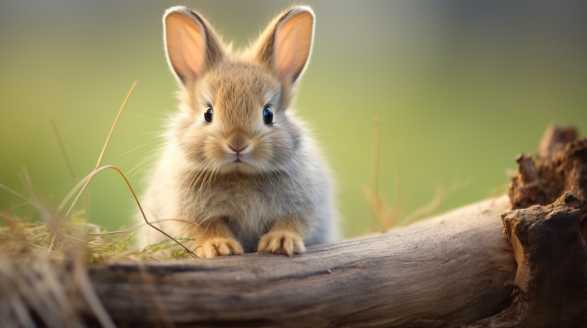
Do Rabbits Purr
Introduction Do rabbits purr? Let’s find out. Imagine this: you’re sitting in your cozy living room, cuddling with your beloved pet bunny. As you stroke its soft fur, you hear a low, rhythmic hum. Your eyes widen with curiosity as you wonder, “What does this purring mean? Is my bunny happy? Amazed by my petting […]
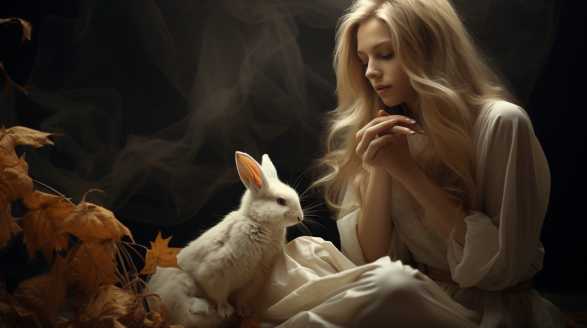
Rabbits In Mythology
Introduction Hey there, fellow adventure-seekers! Get ready for a wild ride as I take you on a journey through the world of rabbits in mythology. So, hop on board as we explore the diverse tales and symbolism surrounding these enigmatic creatures. Picture this: a mystical land filled with gods and goddesses, mischievous tricksters, and chilling […]
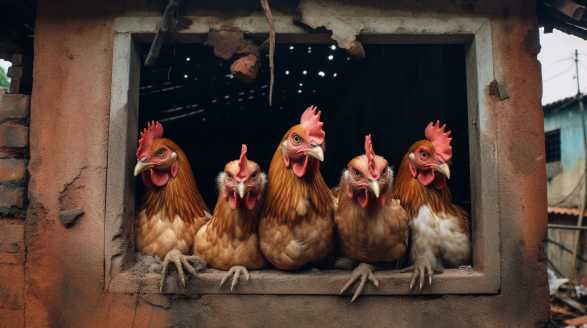
Can Rabbits And Chickens Live Together
Introduction Can rabbits and chickens live together? Let’s find out. Imagine fluffy bunnies with their twitching noses and soft fur, quietly hopping along as chickens joyfully cluck and peck at the ground. It’s like a scene right out of a storybook! But, of course, it’s not all rainbows and sunshine. Keeping rabbits and chickens together […]

What To Do With Baby Rabbits In Your Yard
Introduction Are you ready to dive into the wonderful world of baby rabbits? Well, you’re in for a treat! Whether you stumbled upon a litter of baby rabbits or are a proud rabbit owner, this guide has got you covered. First things first, we’ll start by understanding the needs of baby rabbits. These cute little […]
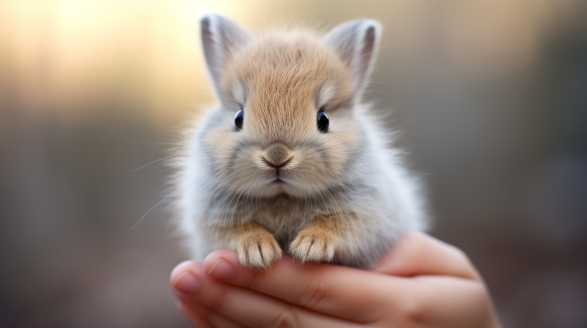
Do Rabbits Know Their Names
Introduction Have you ever wondered if your furry rabbit friend can actually recognize its name? As a proud rabbit owner myself, I’ve always pondered this intriguing question. I’ve done some thorough research, gathered expert opinions, and even tapped into my own personal experiences to bring you all the juicy details. We all know that rabbits […]
